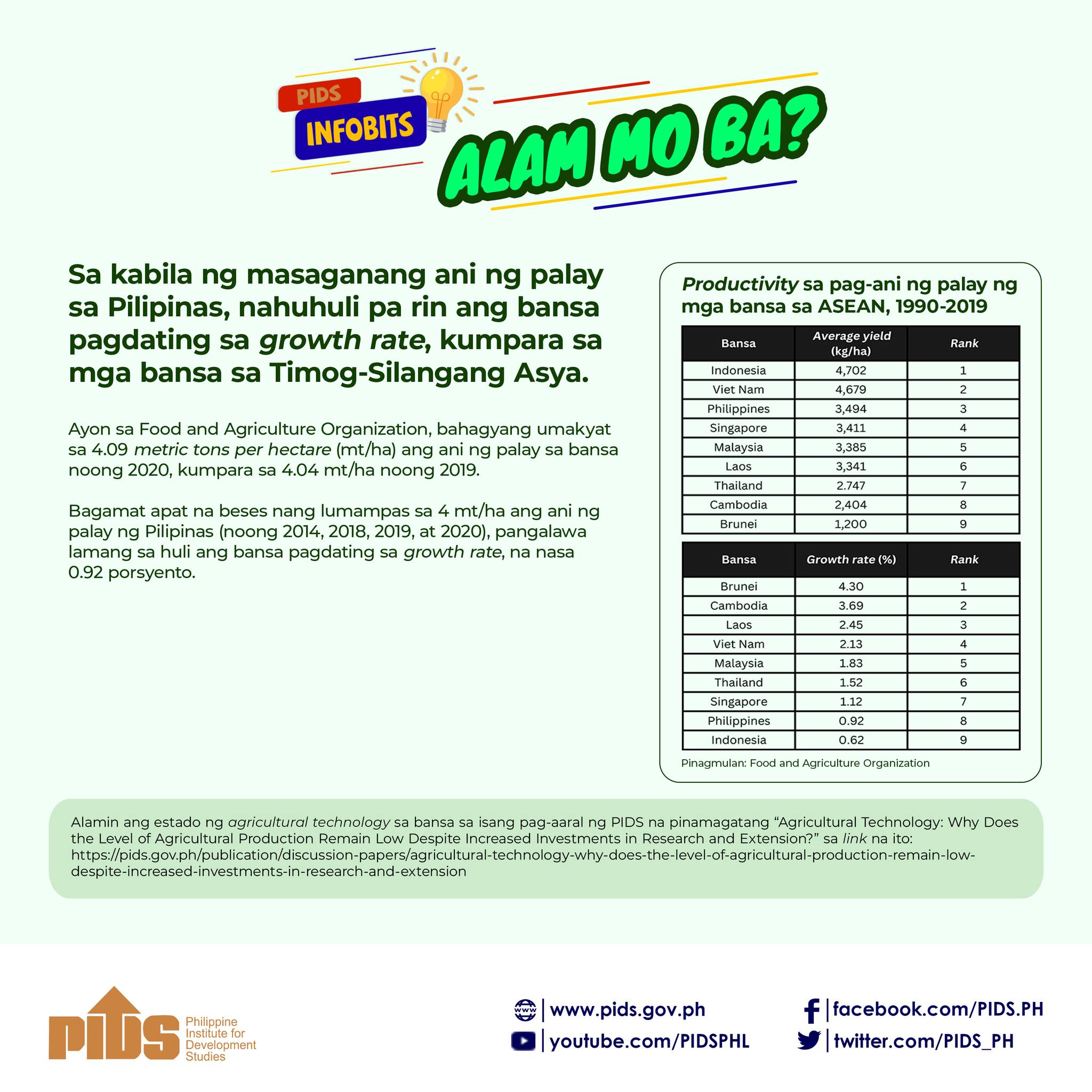THE sustained expansion of the livestock and poultry subsectors buoyed the country’s first-quarter farm output, which grew at a slower pace as El Niño affected the Philippines’s major crops.
Data released by the Philippine Statistics Authority (PSA) showed that farm production in the January-to-March period rose by a mere 0.67 percent, slower than the revised rate of 1.08 percent.
The crops subsector’s output, which accounts for 52.71 percent of total agricultural production, declined 1.01 percent as El Niño slashed the output of 11 crops nationwide, the PSA said.
“Palay and corn production declined by 4.46 percent and 2.07 percent, respectively,” the PSA said in its report published on Wednesday.
“Production decreases were also noted among the major crops such as banana, pineapple, coffee, mango, tobacco, peanut, cassava, garlic and rubber,” it added.
Rice output fell to a three-year low of 4.416 million metric tons from 4.622 MMT last year, while corn production declined to 2.425 MMT from 2.476 MMT in the first quarter of 2018, PSA said.
The PSA attributed the declines in output to the adverse effects of the dry spell in rice and corn-producing regions including Cagayan Valley, Calabarzon, Mimaropa region, Western Visayas, Central Visayas, Zamboanga Peninsula and Northern Mindana.
Agriculture Secretary Emmanuel F. Piñol said the farm sector’s performance in the first quarter is a “relief considering the effects of El Niño.”
“The decline [in crops production] was expected because of the drought which is why we are really pushing for the implementation of small and sustainable irrigation projects,” Piñol told the BusinessMirror via SMS.
The output of the livestock and poultry subsector went up by 1.25 percent and 5.41 percent, respectively, on the back of higher demand for meat products.
Raisers were encouraged by the hike in the buying price of meat products, as a result of the expansion in the requirement of the hotel and restaurant industry.
The livestock subsector contributed 17.11 percent to the total agricultural production, while poultry output accounted for 16.74 percent, the PSA added.
Industry sources told the BusinessMirror that the expansion of livestock and poultry subsectors is “normal” as Filipinos’ consumption of meat products is increasing due to the improvement in their purchasing power.
PSA data also showed that the output of the fisheries subsector in the first quarter inched up by 0.97 percent year-on-year due to favorable weather conditions.
Outlook
INTERVIEWED by the BusinessMirror, Piñol and economists said they expect the farm sector to perform better in the second quarter as the current El Niño episode will soon be over.
“The effects of El Niño are concentrated in crops and in the last two quarters. With that, I think we can look forward to a recovery,” Philippine Institute for Development Studies Senior Research Fellow Roehlano M. Briones told the BusinessMirror.
However, Briones noted that the lingering effects of the El Niño in the second quarter could prevent the sector from growing faster.
Economist Rolando T. Dy said the performance of the crops subsector in the first quarter is a sign that the government must encourage farmers to diversify crops and water use amid changing climatic conditions.
Dy said agricultural production in the second quarter may post flat growth or grow by only 1 percent year-on-year due to drought.
The PSA revised the growth rate of the country’s farm production in the first quarter of 2018 to 1.08 percent, from 1.47 percent to reflect changes in the output of some crops.










